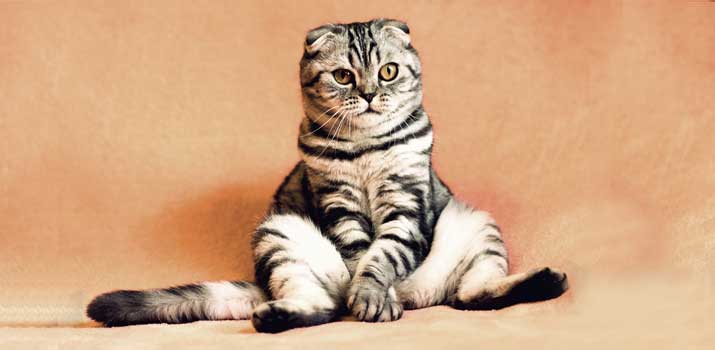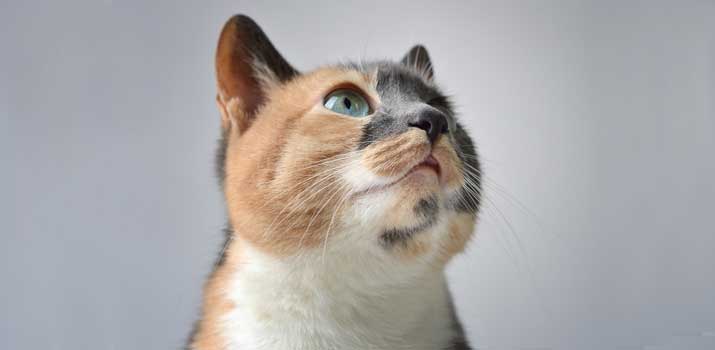
Dry kibble is the go-to for most cat owners. It’s not hard to see why. Dry morsels are easier to store, don’t require much preparation, and are accessible at most grocery stores.
While those dry bits can meet a cat’s nutritional needs, there are better options.
Cue the wet food!
Whether you buy it in a can, pouch, or plastic tray, wet food is closer to what felines eat in the wild.
Formulas can have similar ingredients to dry kibble. However, wet recipes have more protein, lower carbohydrates, and higher moisture content.
That’s more akin to freshly caught prey, which is why many animal experts believe that wet diets are better for cats.
So, you decide to switch to wet food.
You want the very best for your feline friend, right? There’s just one issue: Your cat’s not eating it!
Considering how flavor-packed and aromatic wet food is, you would think that most cats would gobble the stuff down in minutes. What gives?
6 Reasons Why Your Cat Won’t Eat Wet Food
Cats are complex creatures, and figuring out what they’re thinking is never easy! But we can use our knowledge of cat behaviors to understand some of their more confusing actions better.
Here are a few reasons your cat might not be keen on eating wet food.
An Addiction to Kibble
Did you know that some dry foods can have an addictive quality?
It’s undoubtedly a sketchy approach to food manufacturing, but it’s more common than most pet owners realize.
Some brands will coat the pieces of kibble with a flavorful animal digest spray. Cats love the stuff, so the food becomes pretty addictive.
If you’ve given your cat some catnip, you know it’s not hard to get felines infatuated with something!
Unfortunately, that can create problems when it’s time to switch to wet food. Some cats don’t take too well to that withdrawal, outright refusing to eat anything else.
Dental Problems
Does your cat lick up the gravy but leave the bits of food behind?
That might indicate that your cat is suffering from dental issues.
There’s a good chance that your furry friend showed some signs of trouble before you tried switching to wet food. But because this is a newer product they’re not familiar with, they may exercise more caution than usual.
Dental problems are widespread with cats.
Periodontal disease can get bad fast, resulting in other health problems with the kidneys. Don’t ignore those signs of trouble! Visit your vet and get the care your cat deserves.
Potential Health Issues
If dental dismay isn’t to blame for your cat’s aversion to wet food, it could be another underlying health issue. It’s rare, but it’s worth considering.
Many health problems could impact your cat’s appetite.
From parasites and pancreatitis to standard gastrointestinal upsets, it all can cause appetite changes. If this problem persists, visit your vet stat!
Boring Flavors
Of course, sometimes the problem is simply a flavor issue!
Cats have preferences just like humans. If they’re not thrilled about a product’s taste, they will not force themselves to eat it.
But what if they suddenly stop eating food they’ve eaten for months? If that happens, the manufacturer might have changed the formula.
That happens pretty often, and it’s not always advertised. Swapping out a single ingredient can throw the flavor off and force your cat to hate it.
A Need for Something New
On the opposite side of the spectrum, your cat could be bored!
Some pets are pickier than others. Those pickier felines aren’t thrilled about eating the same food repeatedly.
In that case, the refusal to consume the food you put in front of them is more like a stubborn boycott than anything else.
A Preference for Routine
Is your cat one that prefers to stick in the comforts of home?
While cats have a reputation for venturing off and getting into trouble, some like to surround themselves with things they are familiar with seeing daily.
That includes food!
A sudden switch to wet food can be too much to handle.
Your cat might feel trepidation around the new product, forcing them to avoid eating it.
How to Encourage Your Cat to Eat Wet Food

Watching your cat refuse to eat can be worrisome. But as long as they’re not suffering from dental or medical issues, it’s not a massive cause for concern.
Encouraging your cat to eat wet food is easier than you think, but it requires careful strategizing.
Follow these tips, and your cat will be indulging in no time!
Provide More Structured Meals
Here’s the thing about canned food: You can’t free feed with it.
Wet food can become a breeding ground for bacteria. Mold can develop, and it can quickly turn into a nasty mess!
Best practices say you shouldn’t leave wet food out for more than four hours at most.
If your cat is used to free-feeding on dry kibble, you’ll need to wean them off that habit.
Before transitioning to wet food, break up your cat’s dietary requirements into two or three daily meals.
Take Things Slow
Another important thing to remember is that sudden dietary changes can cause stomach upsets. That could be why your cat avoids eating those wet canned meals right off the bat.
Once you are on a two or three-meal feeding schedule, consider adding wet food to the mix.
Start with a spoonful before using it as a topper. Slowly increase the wet-to-dry ratio before you take out the kibble entirely.
Not only will this tip make things easier on your cat’s stomach, but it’ll allow them to get comfortable with the change.
Offer No Other Alternative
Whatever you do: Don’t give in to your cat’s begging!
No matter how cute it is, resist those adorable eyes and calls for attention. Many cats will attempt to persuade you to give them their normal dry food. Resist that urge to cave in.
Also read: What Do Cats Like to Eat for Breakfast
Toss it in the Microwave
Here’s a scenario that many cat owners experience firsthand.
After feeding your cat half a can of wet food successfully, you toss the leftovers in the fridge for later. But come dinnertime, your cat refuses to eat the rest.
The issue here is that the food is cold!
In the wild, cats will hunt prey and eat it on the spot. The body’s still warm.
Refrigerated food is like you eating a frozen steak. No one wants that! Food often hardens as well. It gets thick, and the aroma isn’t strong enough to entice cats.
Fortunately, overcoming that issue is as easy as popping the meal into the microwave.
Heat the food in short bursts of about five seconds each. Stir it frequently until the meal is warm.
Don’t give your cat scorching hot food. It should be lukewarm enough to bring out the flavors and restore its original texture.
Safe Food Deprivation
This tip will sound a little questionable, but hear us out!
Cats often refuse food because they have the luxury of knowing that you won’t starve them. They understand that another meal is on the way, so they can hold out and hope you get desperate enough to switch things up.
One way you can encourage them to eat is to increase their hunger levels. Don’t provide food in the morning. By dinnertime, they’ll be eager to get a taste of that wet food!
Of course, be extra careful with this tip!
Don’t let your cat go for more than 24 hours without food. That can lead to many health problems you don’t want to have on your plate.
Focus on Flavor
Earlier, we discussed how some cats avoid bland foods and flavors they don’t like. If you suspect that’s the case, try something new!
Explore unique flavors. There are plenty of options out there. Instead of going with traditional chicken, try fish or venison.
You can even experiment with different textures. For example, some foods come in stew form, a soft mash, pate, and more.
See what your cat likes, and you’ll never have to face this issue again.
Also read: What To Feed Stray Cats?
Add Some Extras
Does your cat have a favorite treat? Stick it in the middle of the food.
You’ll find that many cats will eat the food once they get a small taste. They’re hesitant beforehand, but a tiny lick will reveal that the food is pretty good!
Adding a treat is a fantastic way to do that.
You can also use toppers and other extras your cat enjoys.
Finding Your Cat’s Mealtime Flow
Getting your cat to eat can involve trial and error, but be patient! Cats can be a little stubborn.
Give them time and use our tips to ease the transition to wet food. Once you find what works, your feline friend will love the decadent meals you provide!
Also read: Top 5 Best Automatic Cat Feeders For Wet Food

